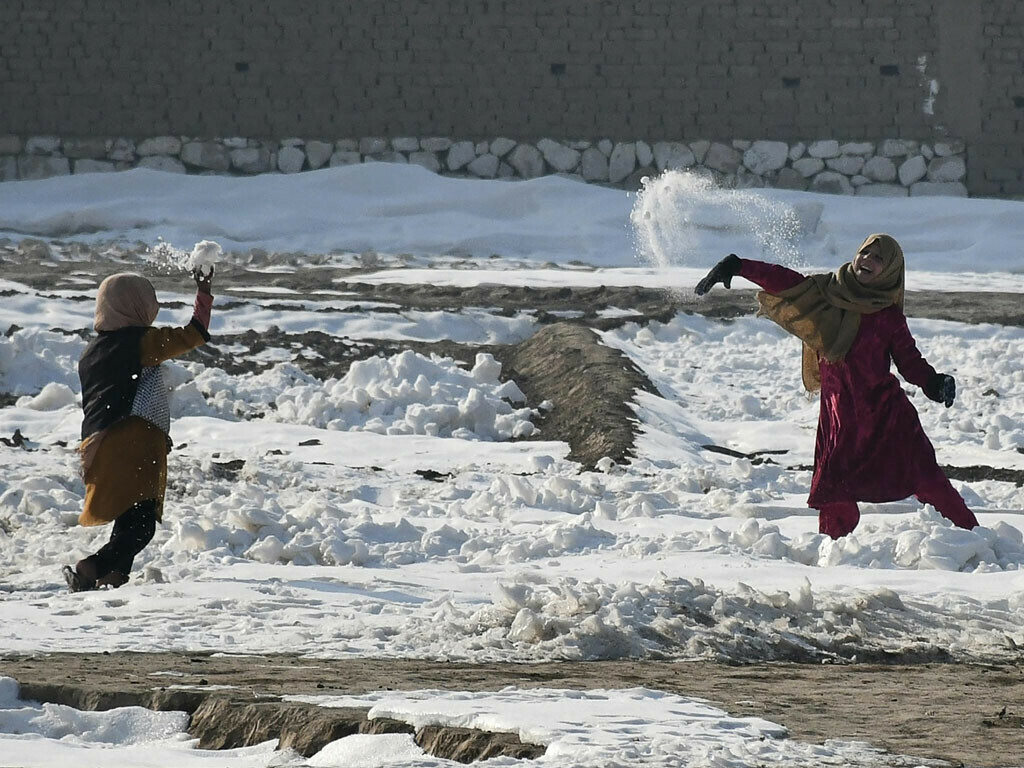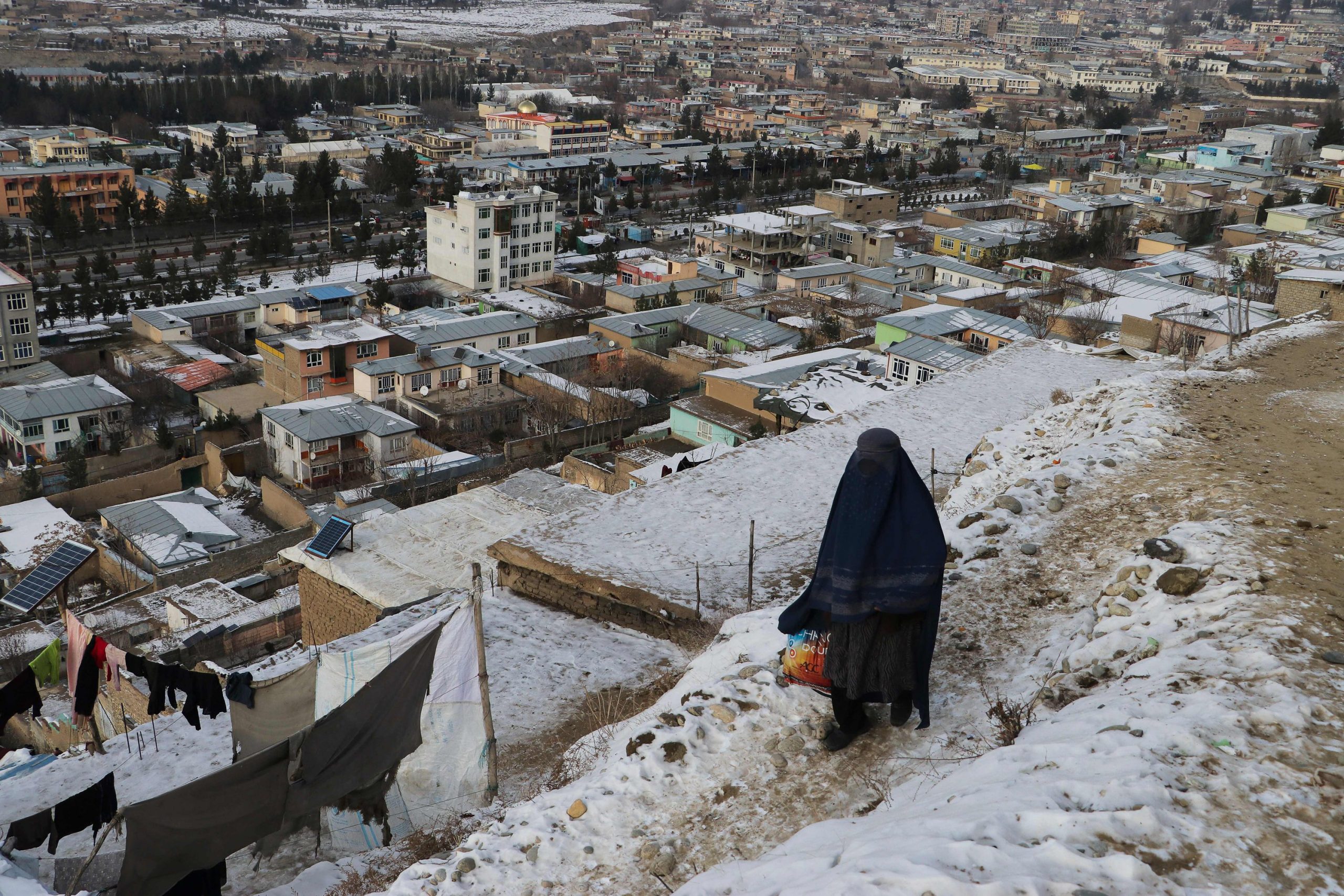At least 78 people have died in just over a week during the harsh winter across Afghanistan, deepening the country’s humanitarian crisis as well as highlighting the need for more foreign aid.
Taliban spokesman for the Ministry of Natural Disaster Management, Shafiullah Rahimi said that the death occurred since January 10 and said that over 75,000 livestock also have died as a result of freezing weather. More livestock may freeze to death in the future as a result of the chill.
Rahimi said they have taken enormous steps to help the needy families and already reached one million people across the country. “We are still working to reach more people and support them during this harsh cold weather.”
Winter season has just started and the weather will get colder in the next few days, the official said, adding that humanitarian aid for the affected people is the need of the hour.
The United Nations Office for the Coordination of Humanitarian Affairs (OCHA) said that the “bitterly cold weather in Afghanistan has reportedly killed thousands of livestock across the eastern, western and northern regions.”
Temperature to drop as low as -35 degree Celsius
Weather forecasts say that temperature will drop to as low as -35 degree Celsius in certain parts of Afghanistan, leaving further threats to the living conditions of vulnerable families, including the children.
OCHA said that although humanitarian aid organizations are putting maximum efforts to provide winterization support to families, including heating, cash for fuel and warm clothes, distributions have been severely impacted by the Taliban ban on female NGO aid workers, it added.
Afghanistan’s meteorology office said that this winter is by far the coldest in recent years and it predicts that the cold wave will continue for another week or more.
Several roads connecting Northern provinces were also blocked by heavy snowfall. In a country like Afghanistan where it mainly depends on foreign aid, it is difficult to deal with such a disaster alone.
Foreign aid suspended
Since December, at least half of dozens of major foreign aid groups have temporarily suspended their operations after the Taliban instructed the NGOs to suspend their female workers until further notice. Taliban also warned to revoke NGO’s licenses if they did not obey the instructions.
The Taliban justified their decision to ban women from the workplace because some women had not adhered to the Taliban’s interpretation of Islamic dress code.
In response, several NGOs have suspended operations, saying they needed female workers to reach women in different areas across the country.
However, some aid organizations have restored some operations in Afghanistan after they received assurances from Taliban authorities that women could work in areas such as health.
The International Rescue Committee (IRC), Save the Children and CARE said that they were again operating some programs, mostly in health and nutrition.
IRC Spokesman Nancy Dent said that the Ministry of Public Health offered assurances that female health staff, and those working in office support roles, can resume working.
“Based on this clarity, IRC has restarted health and nutrition services through our static and mobile health teams in four provinces,” Dent said, adding the ministry assured them this last week.
Citing the spokesperson from the Afghan Ministry of Public Health, the Reuters reported that the Taliban did not stop any health-related activities.
“Due to a misunderstanding they stopped their health services and now they have restarted their health services,” he said.
Half of the population needs support
Afghanistan has been going through one of the world’s worst humanitarian crises, where half of its estimated 38 million people are facing poverty and at least three million children are at risk of malnutrition.

Two Afghan girls playing with snow.
Several NGOs heads and the international community have been trying to engage with the Taliban to convince them to reverse their decision but these high-level meetings did not bear any fruits so far. These officials during their meetings have asked for the undoing of the order banning women in the aid sector, but apparently no breakthrough was made. The ban is also expected to have heavy consequences on aid flows coming into the country and already people are affected with this decision.
UN high-ranking delegation visited Kabul
Meanwhile, the highest-ranking United Nations delegation has visited Afghanistan since the Taliban regained power in 2021.
Deputy Secretary-General Amina Jane Mohammed, the highest-ranking woman at the UN, held talks with Taliban Foreign Minister Mawlawi Amir Khan Muttaqi.
Muttaqi told Mohammed that the Taliban has been facing numerous issues at the outset; however, most have fortunately been addressed. “Narcotics cultivation has dropped to zero, security has been ensured, and schools have been opened for nearly 10 million students,” government-run agency (Bakhtar) reported.
Muttaqi furthered that women are engaged in educational and health sectors in significant numbers whereas those who used to work in government offices are paid salaries at home.
The number of female inmates has reduced considerably and broad facilities have been provided in the business sector, according to Muttaqi.
In her part, Mohammed expressed hope for further progress and cooperation to address the existing challenges.
She pledged to convey the realities as witnessed to the international community, taking firm steps for continued assistance to Afghanistan.
Deadly winter and the plight of Afghans
Mullah Mohammad Abbas Akhund, the Taliban Minister for Natural Disaster Management has called for more aid to help the needy Afghans and lamented that they can’t reach everyone. “The number of victims is not precise because we are not able to reach remote areas.”
His ministry in a statement said that they are deeply saddened that “our countrymen” have lost their lives in some provinces due to the severe cold weather. It also called on the related organizations and officials to immediately coordinate cooperation to help the affected families.
Before the winter, there were predictions by the humanitarian aid groups that more Afghans will struggle for survival in the next winter because living conditions have deteriorated in the past year.
Unfortunately, 24 million Afghans are in need of humanitarian aid at the moment, while hundreds of people have been brought to hospitals with hypothermia. Sadly, a big number of low-income Afghans are unable to afford wood and coal in the winter due to their economic difficulties and they are looking for the government and aid agencies to come up and help them.
Meanwhile, transportation issues caused by inclement weather and heavy snowfall, has made it difficult for government and humanitarian agencies to deliver aid to people in need.

 OPINION2 weeks ago
OPINION2 weeks ago
 DIPLOMACY2 weeks ago
DIPLOMACY2 weeks ago
 DIPLOMACY7 days ago
DIPLOMACY7 days ago
 ASIA2 weeks ago
ASIA2 weeks ago
 DIPLOMACY1 week ago
DIPLOMACY1 week ago
 MIDDLE EAST2 weeks ago
MIDDLE EAST2 weeks ago
 ASIA1 week ago
ASIA1 week ago
 MIDDLE EAST1 week ago
MIDDLE EAST1 week ago




















